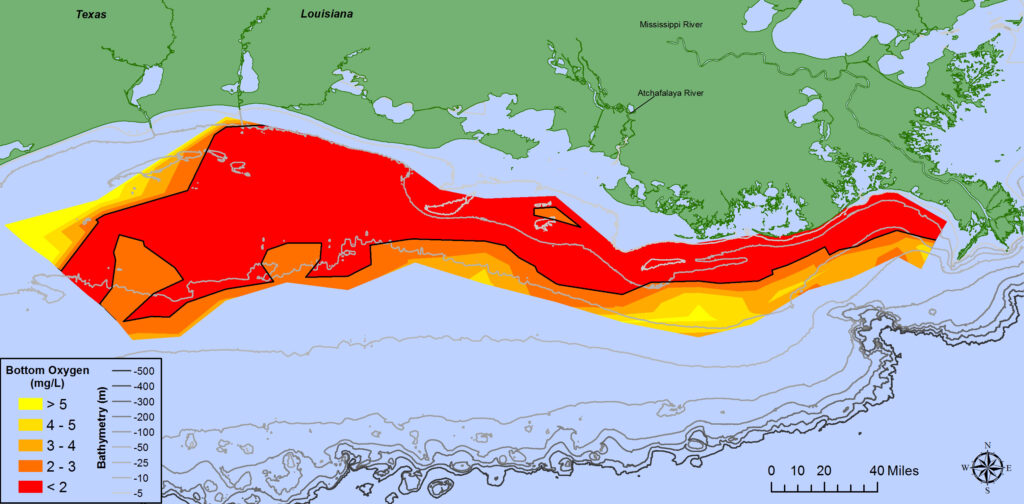Several NOAA-sponsored models took center stage at a recent meeting of the Mississippi River/Gulf of Mexico Hypoxia Task Force Coordinating Committee. Results from the models offered the task force new guidance on the levels of watershed nutrient reduction needed to mitigate the northern Gulf hypoxic zone, also known as the “Dead Zone.”
Using voluntary and incentive-based nutrient reduction programs, the task force aims to decrease the size of the Dead Zone to 5,000 square kilometers by 2035, roughly a third its current size. As part of their adaptive management approach, the task force also has an interim target of reducing springtime nitrogen and phosphorus loading to the Gulf by 20 percent by the year 2025.
At the meeting, NOAA committee member Alan Lewitus presented recently published findings from a suite of scenario-based, hypoxia forecast models, which provided the task force new information on the nutrient reduction levels needed to meet the 2035 goal and on the expected outcome a 20 percent nutrient reduction would have on the size of the Dead Zone. The models included 3-D, time-variable models and an ensemble of regression-based models developed over the past decade through NCCOS-sponsored research and represent additional capability now available to the task force to evaluate nutrient reduction scenarios.

The group discussed two, key messages that will influence task force strategies moving forward. First, to reach the 2035 goal, the models found that it would be much more effective to reduce nitrogen and phosphorus simultaneously rather than decrease either nutrient type alone. Specifically, the new models estimated that a 58–65 percent reduction of nitrogen alone would be required to reach the desired hypoxic zone size, but that a dual strategy to reduce both nitrogen and phosphorus by 45 percent would be sufficient and result in faster attainment of the target size.
Second, the 3-D, time-variable models indicated that a 20 percent reduction in nitrogen (to reach the interim goal) may not significantly change the size of the hypoxic zone. The group agreed that this is largely attributed to the amount of excess nitrogen already in the system, which will mask the impacts of the initial reductions. Once the excess nutrients are removed, additional reductions are expected to have a greater effect on shrinking the size of the hypoxic zone.
